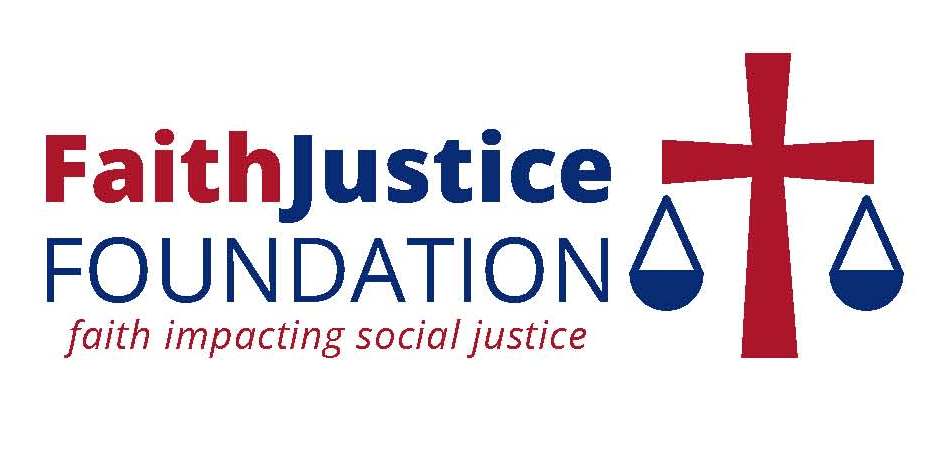AREAS OF FOCUS
——————–
VOTING RIGHTS
The FaithJustice Vision
Voting rights and civic engagement have been an important part of our nation’s civil rights discourse ever since 1965 when people from all walks of life gathered at the Edmund Pettus Bridge, to march from Selma to Montgomery, fighting for voting rights. People of faith were an important part of that famous march, and they are still needed at the forefront of protecting and expanding voting rights in America. Today, Americans must confront efforts to limit voter turnout through voter identification laws, voter intimidation, redistricting, felony disenfranchisement, and other issues.
The FaithJustice vision is for all citizens, regardless of race, gender, religion, age, ability, or economic status to utilize their voice and vote to create a more just society. To this end, we call upon people of faith to prioritize civic engagement by participating in policy discussions on both the local and national level and by engaging in grassroots voter education and registration.
The Biblical Witness+
You should also look for able people among all the people, people who fear God, are trustworthy, and hate dishonest gain; set such people over them as officers over thousands, hundreds, fifties, and tens. (Exodus 18:21)
Choose for each of your tribes individuals who are wise, discerning, and reputable to be your leaders. (Deuteronomy 1:13)
One who rules over people justly, ruling in the fear of God… (2 Samuel 23:3b)
He has told you, O mortal, what is good; and what does the Lord require of you but to do justice, and to love kindness, and to walk humbly with your God (Micah 6:8)
He said to them, “Then give to the emperor the things that are the emperor’s, and to God the things that are God’s.” (Luke 20:25)
Key Issues
Voter Misinformation
Exercising one’s right to vote is the foundation of democracy. Yet only 64% of people eligible to vote in the U.S. in 2016 were actually registered. But only roughly 56% cast a ballot in the 2016 election. White voter turnout in 2016 was 65%, while Black voter turnout was under 60%, and the Asian and Hispanic populations both under 50%. Various factors contribute to people— particularly minorities—not voting, including efforts to confuse or intimidate voters. Documented techniques include misleading or intimidating ads, fake calls or texts, fake voter purge letters, false information about remote voting options, false voter fraud allegations, misleading photos about lines at polling places, and false rumors of various kinds.
Solutions: Numerous public policies and tools have emerged to make voting easier, including absentee voting, early voting, online voting, and same-day voter registration, though not all are available in every state. Nonprofit organizations such as TurboVote and the League of Women Voters have also launched tools to make it easy to register, access election information, and receive tailored information about when and where to vote. And numerous organizations, including faith institutions, participate in and/or run get out the vote campaigns and voter registration drives. Poll-watching efforts help protect the vote on election day. Election Protection, an initiative of the Lawyers’ Committee for Civil Rights runs a volunteer-staffed national hotline where voters can verify voting information and report suspicious activity. Lawyers & Collars engages clergy in partnership with attorneys to meet with state election officials and to engage faith communities in voter education and protection.
How to Take Action:*
- Organize a Turnout Sunday event with Lawyers & Collars
- Run a voter registration drive in your community with help from resources such as TurboVote and Vote411
- Volunteer with Election Protection to protect everyone’s right to vote
_____________________________________________________________________________________________
Voter Suppression Laws
In 2013, the Supreme Court struck down the portion of the Voting Rights Act of 1965 which established federal oversight of elections in states with a history of racial discrimination. This decision allowed states to start passing laws restricting the ability to vote. Common barriers to voting include voter ID laws, reduced polling place hours, and the practice of purging voters from the rolls. For instance, 34 states have enacted laws requiring voters to have some form of government-issued photo identification at the polling place despite more than 21 million voting-age citizens, or 11% of the voting age population, do not have photo IDs. These laws in particular disenfranchise minorities, nearly 25% of African Americans (6.2 million African American voters) and 16% of Latinos (2.96 million Latino voters) do not possess valid photo IDs. Additionally, over 5.3 million people are denied the right to vote because of laws that prohibit convicted felons from voting.
Solutions: Congress is working to restore the Voting Rights Act, which the House of Representatives passed in 2019. Various organizations such as the Lawyers’ Committee for Civil Rights and the League of Women Voters are currently litigating cases and advocating for policies to change voter ID and felony disenfranchisement laws.
How to Take Action:
- Advocate for policies that prevent voter suppression and protect the right to vote for all people with The League of Women Voters
*Note that there are important legal limitations for tax-exempt organizations engaging in activities of a political nature. Voter education and registration must be nonpartisan in nature. Be sure to familiarize yourself with those limitations before engaging in voter education efforts.
Other Resources
- Rock the Vote: www.rockthevote.org
- NAACP Civic Engagement: www.naacp.org/issues/civic-engagement
- American Civil Liberties Union: www.aclu.org/issues/voting-rights
- Lawyer’s Committee for Civil Rights Under Law: www.lawyerscommittee.org/project/voting-rights-project
- US Vote Foundation: www.usvotefoundation.org/


